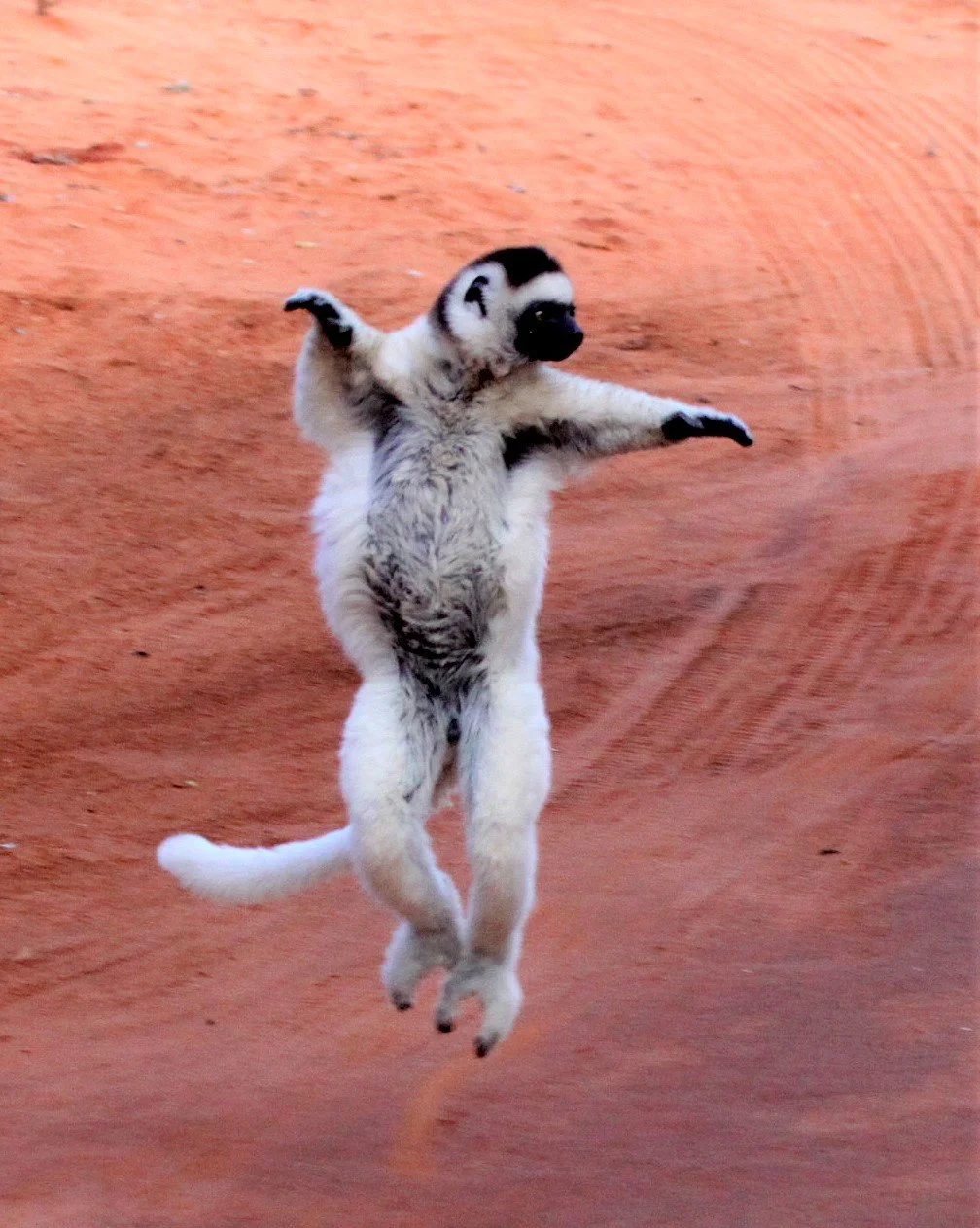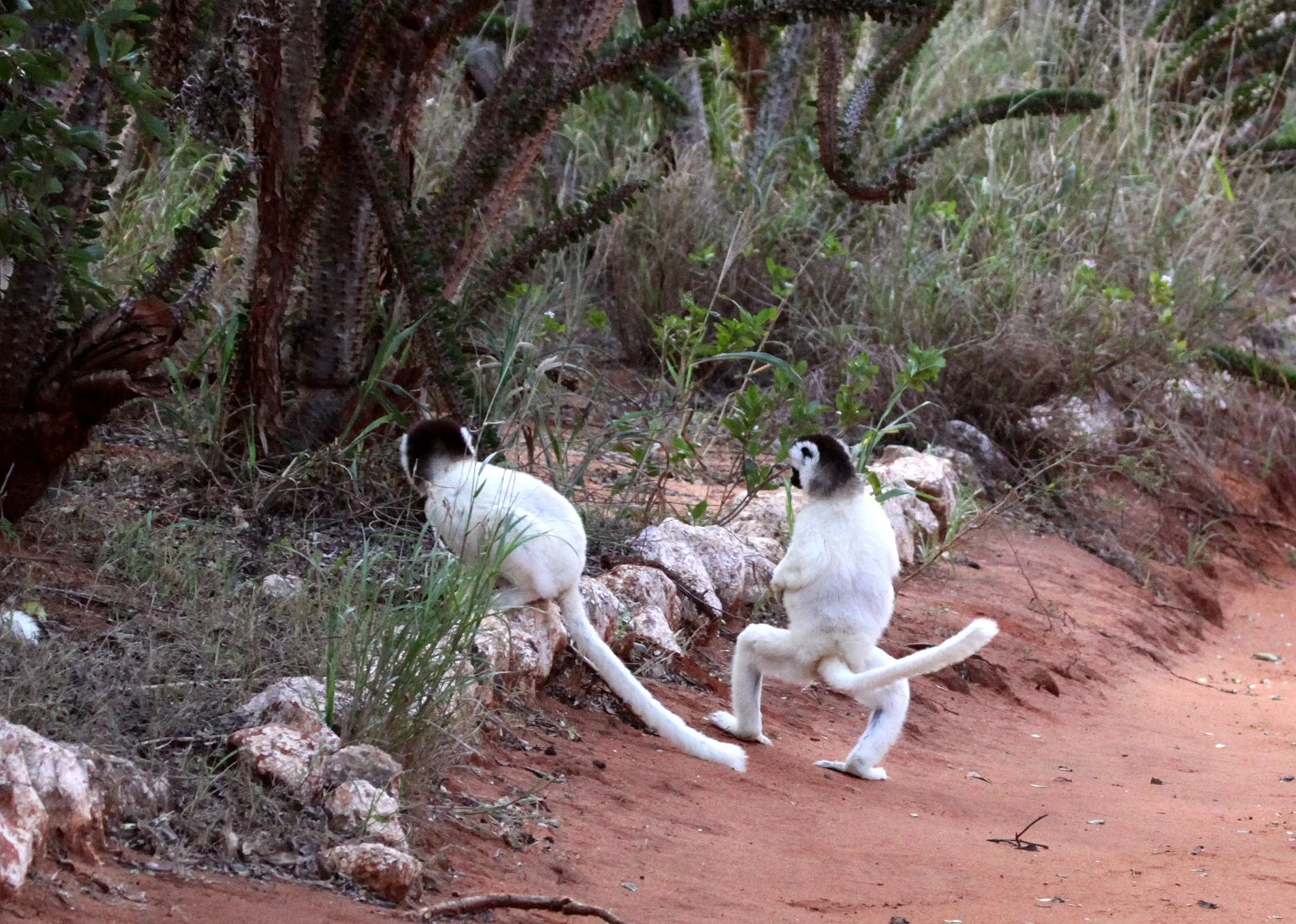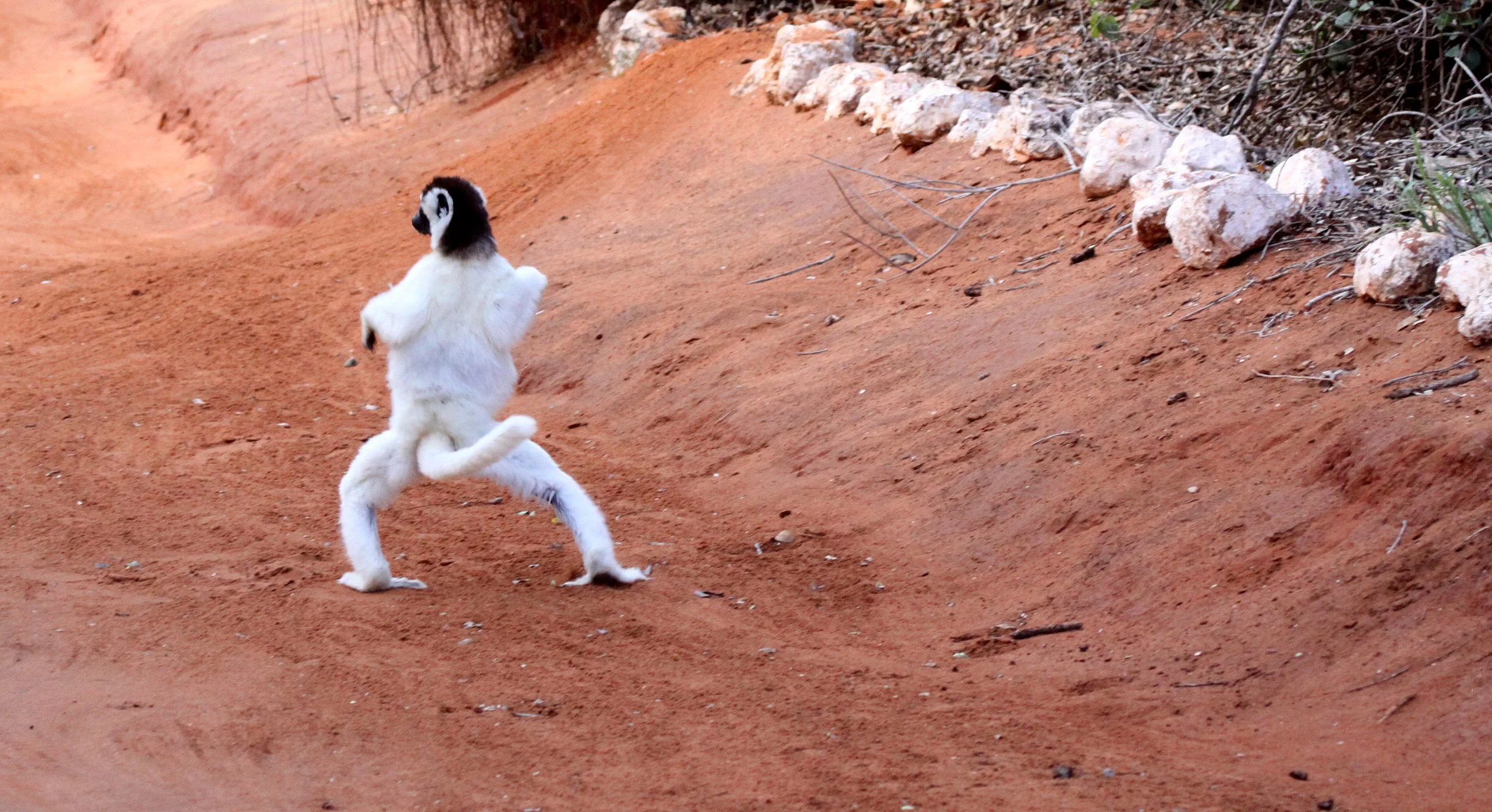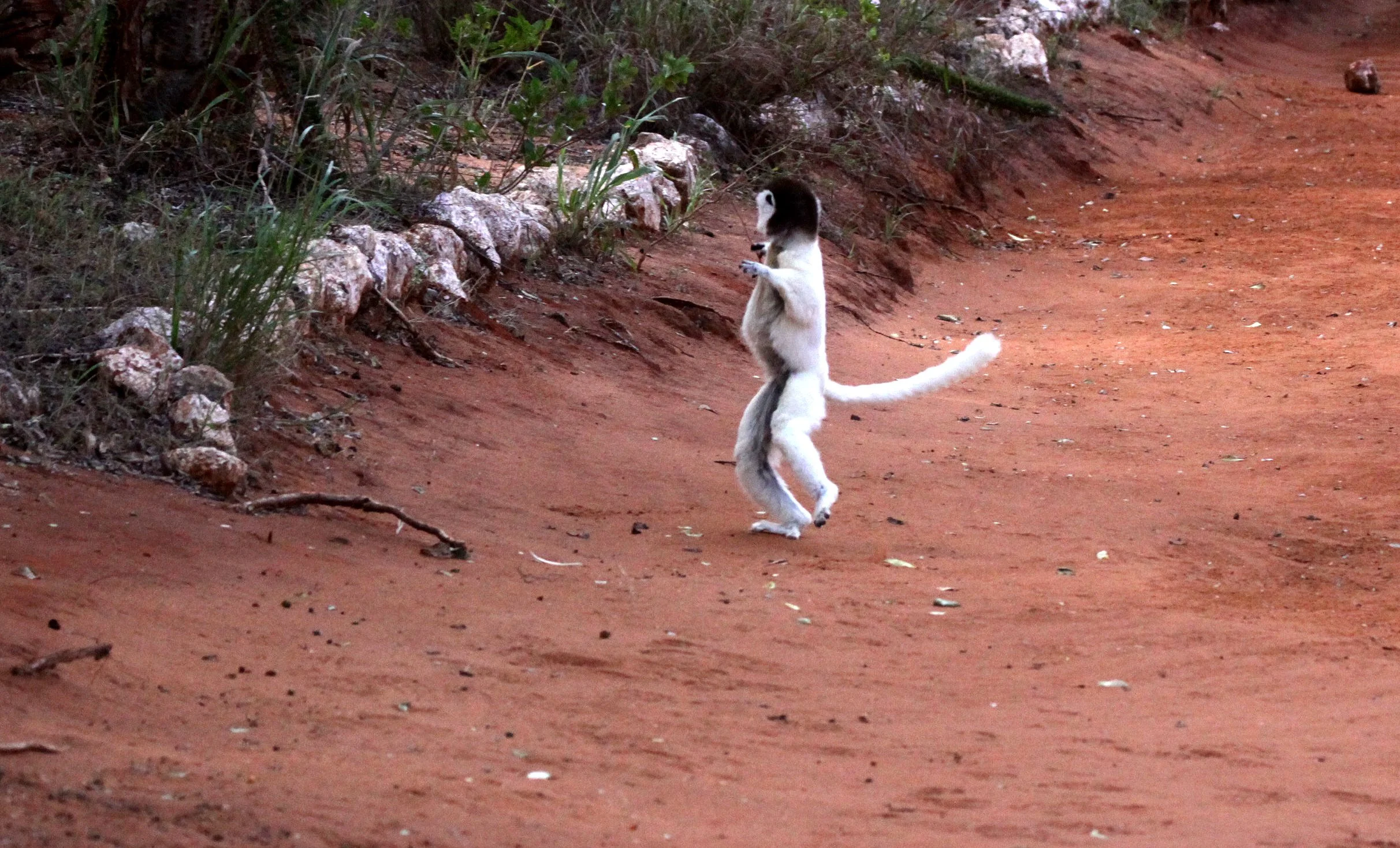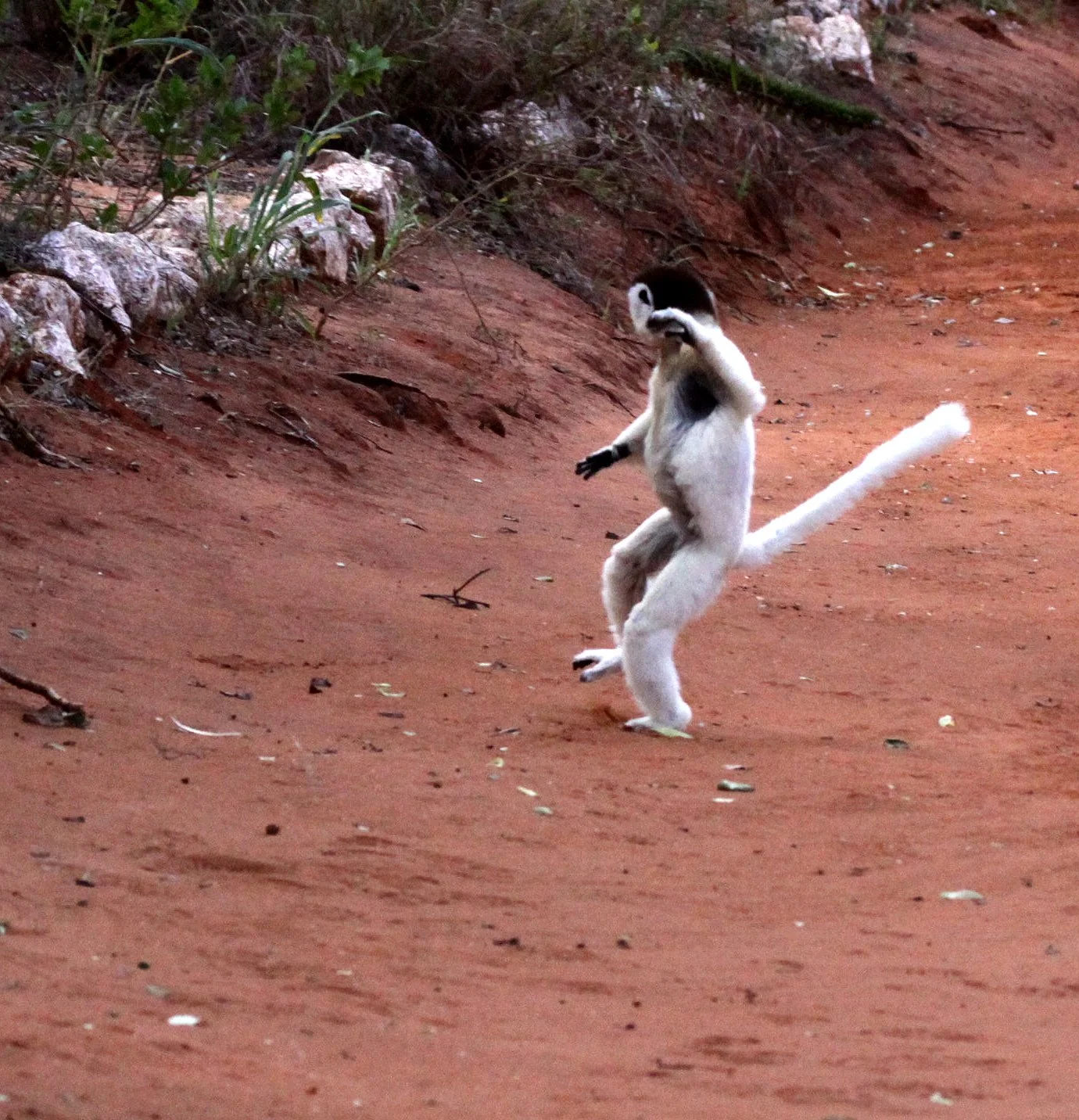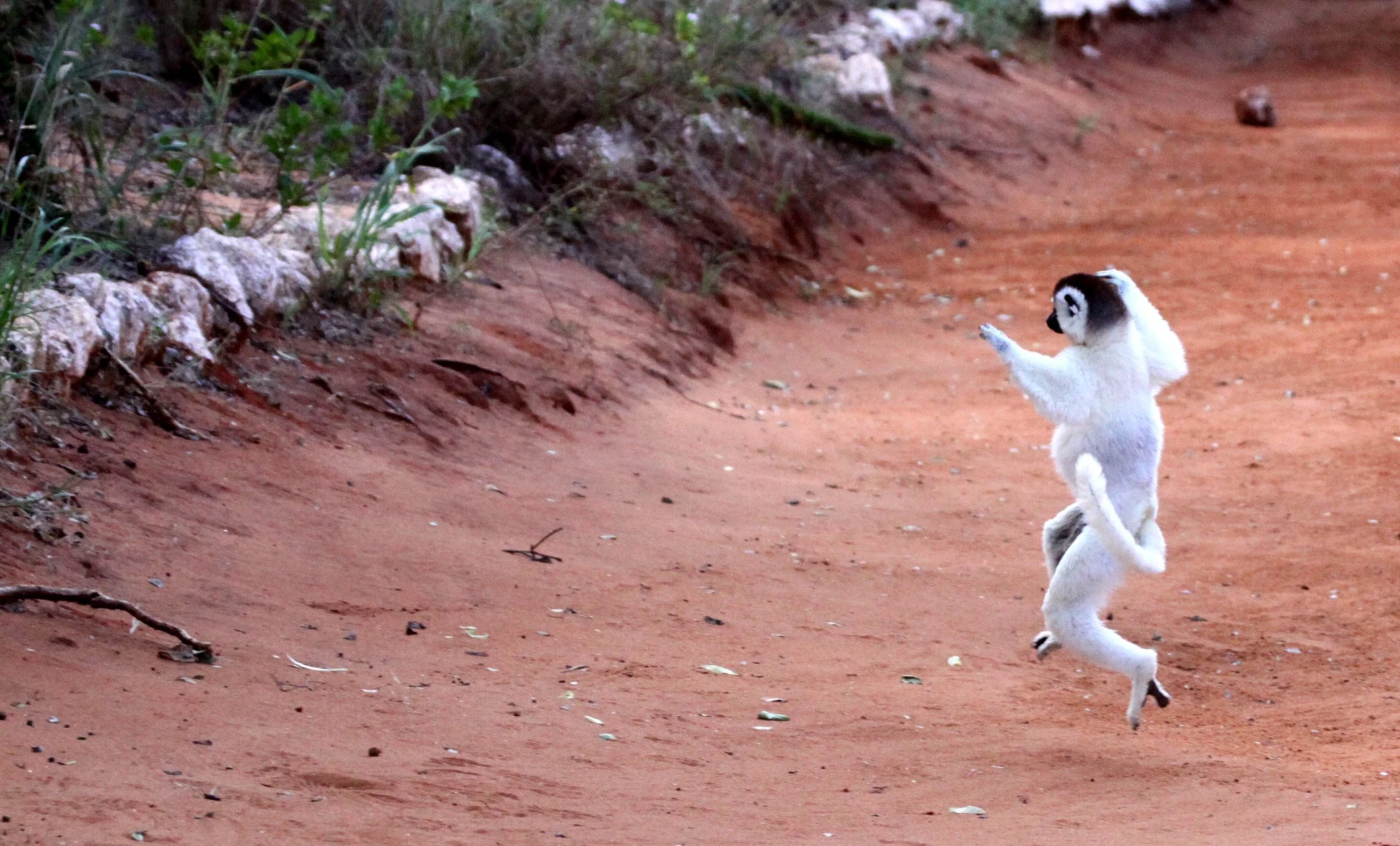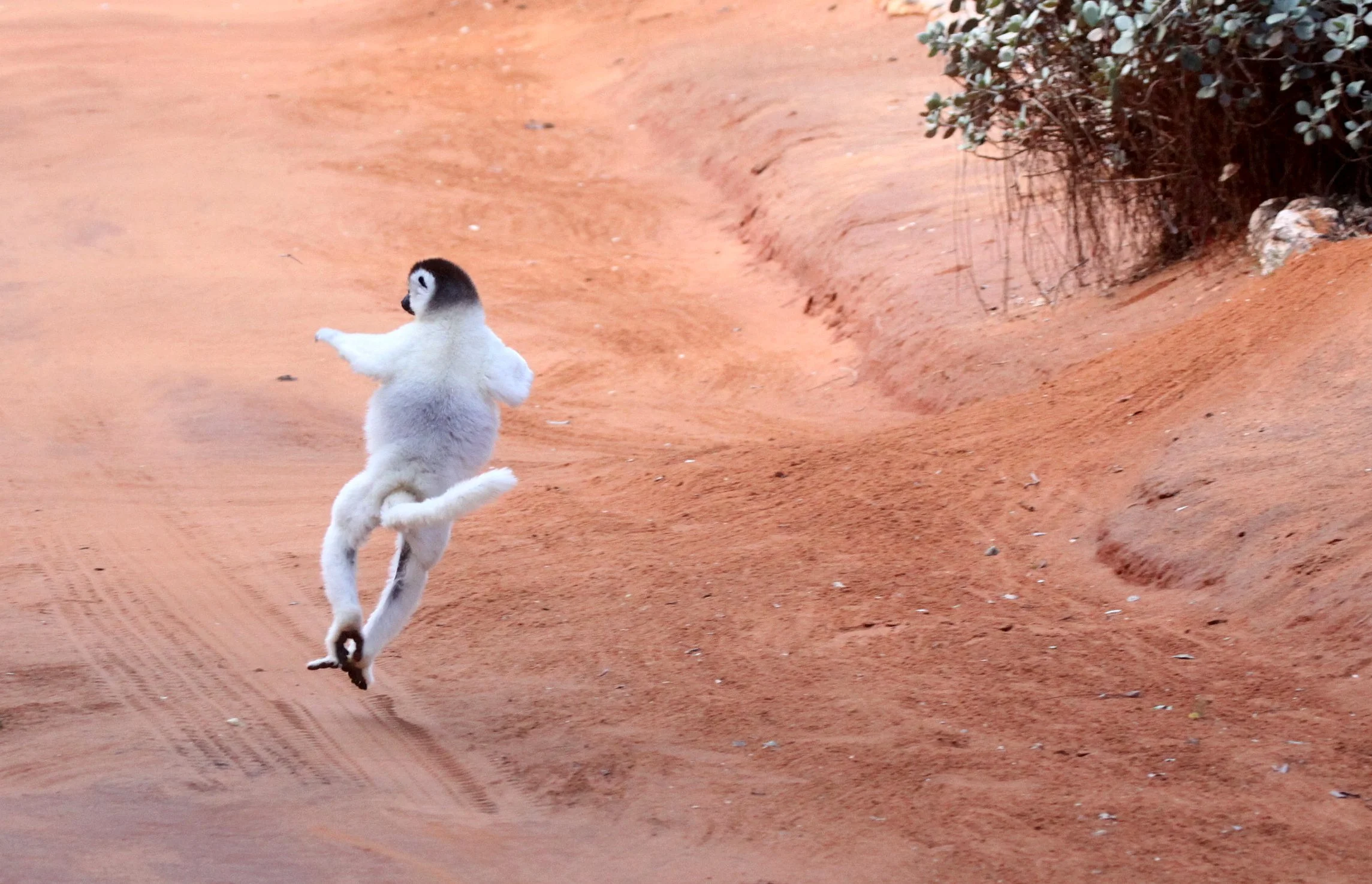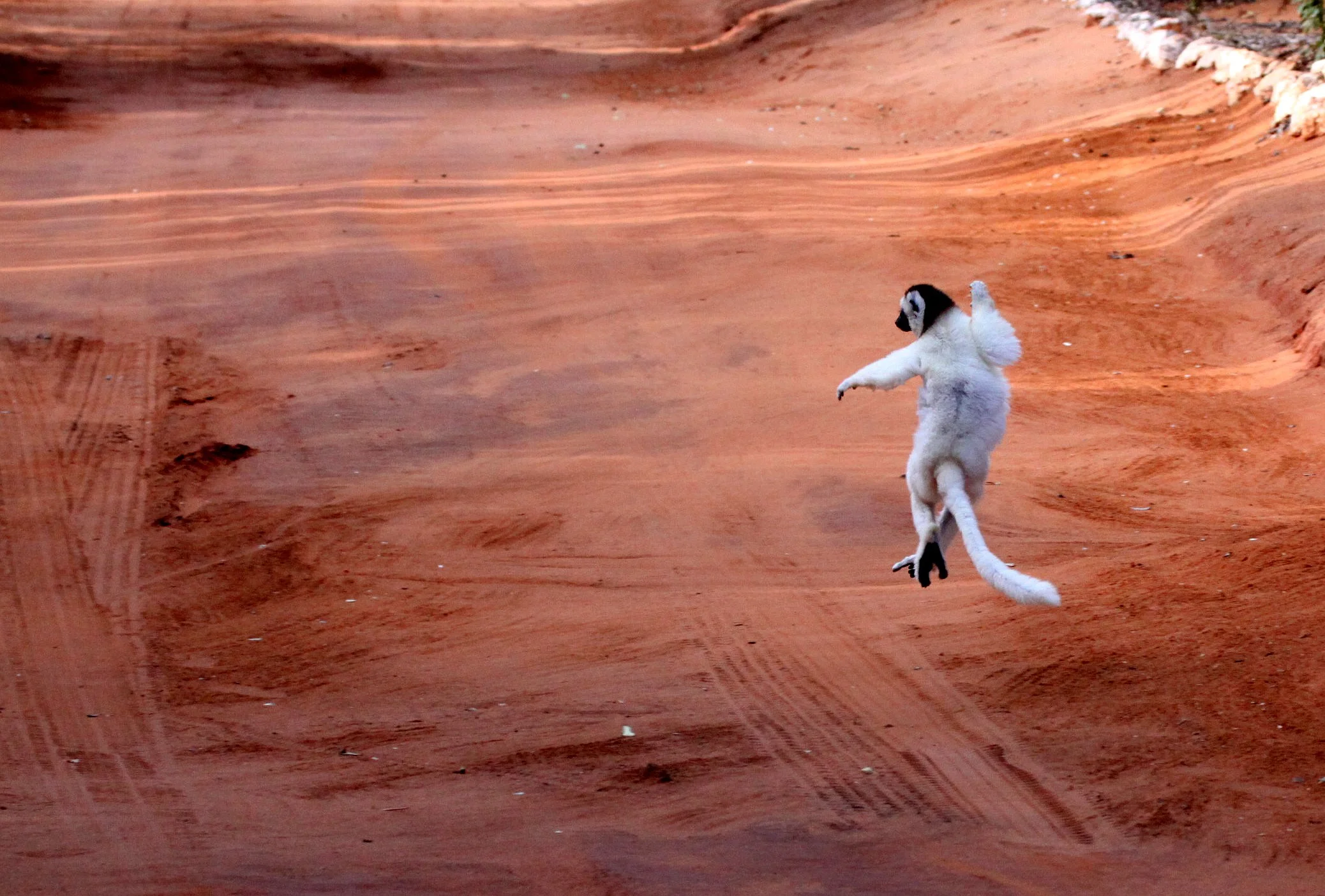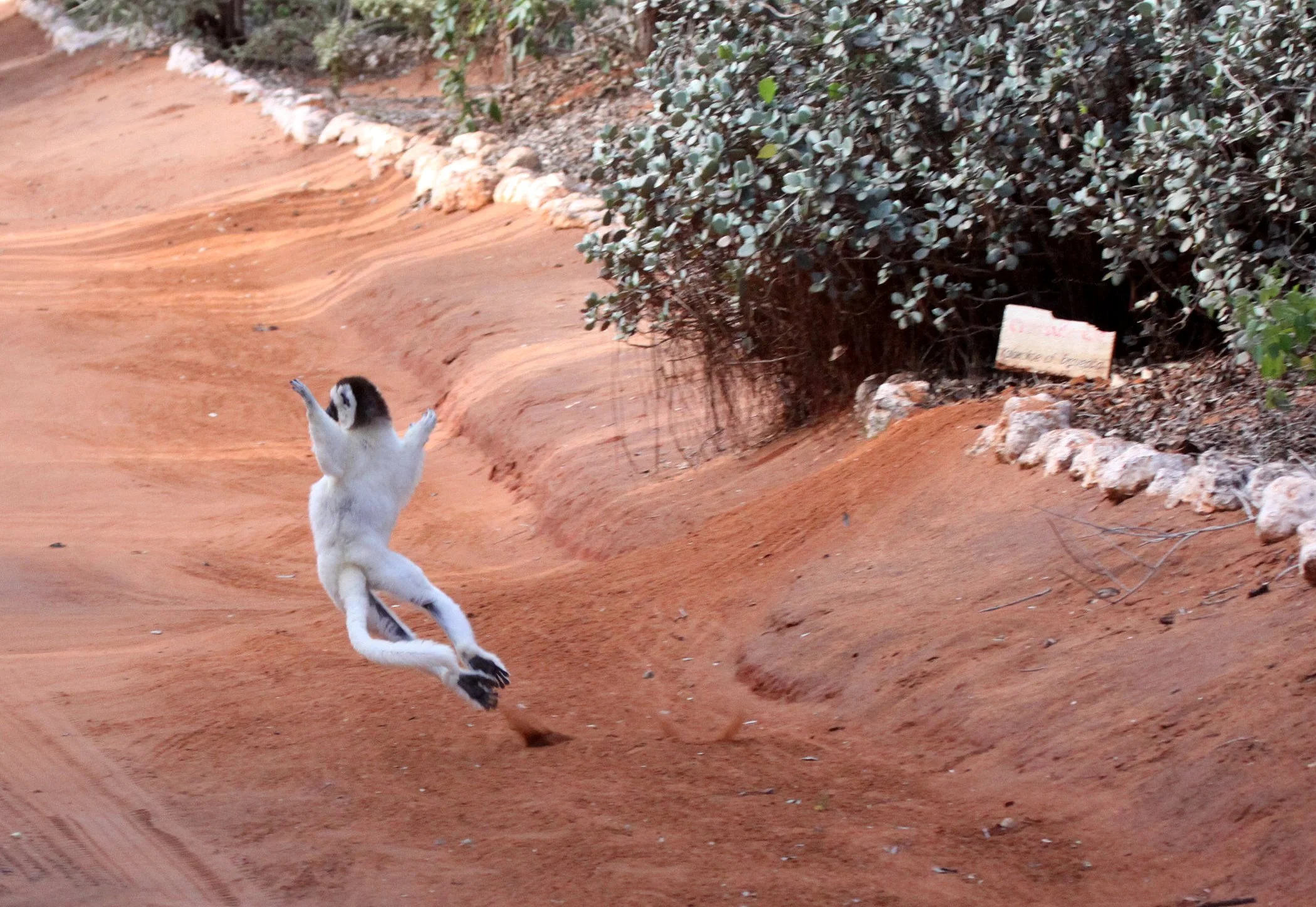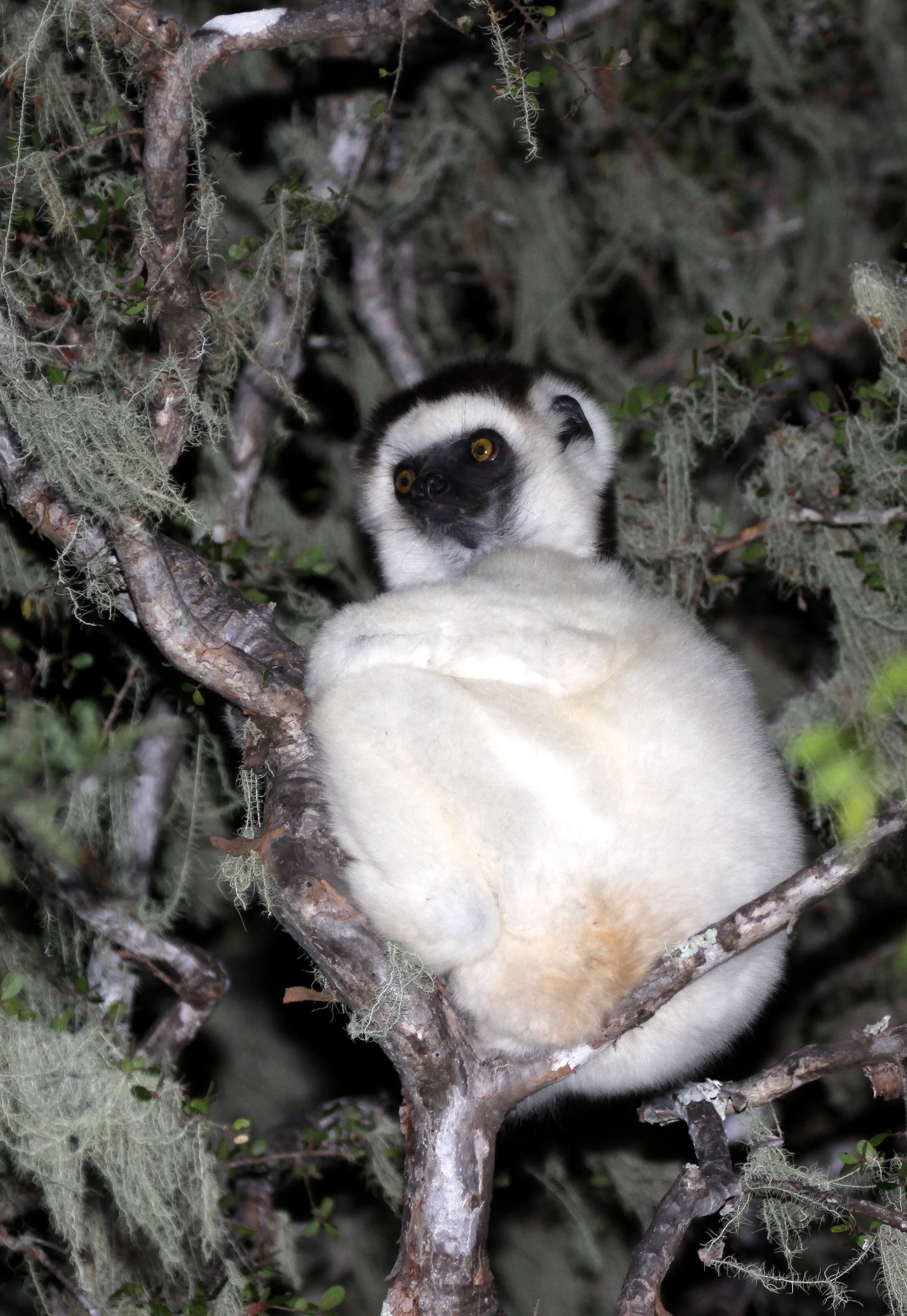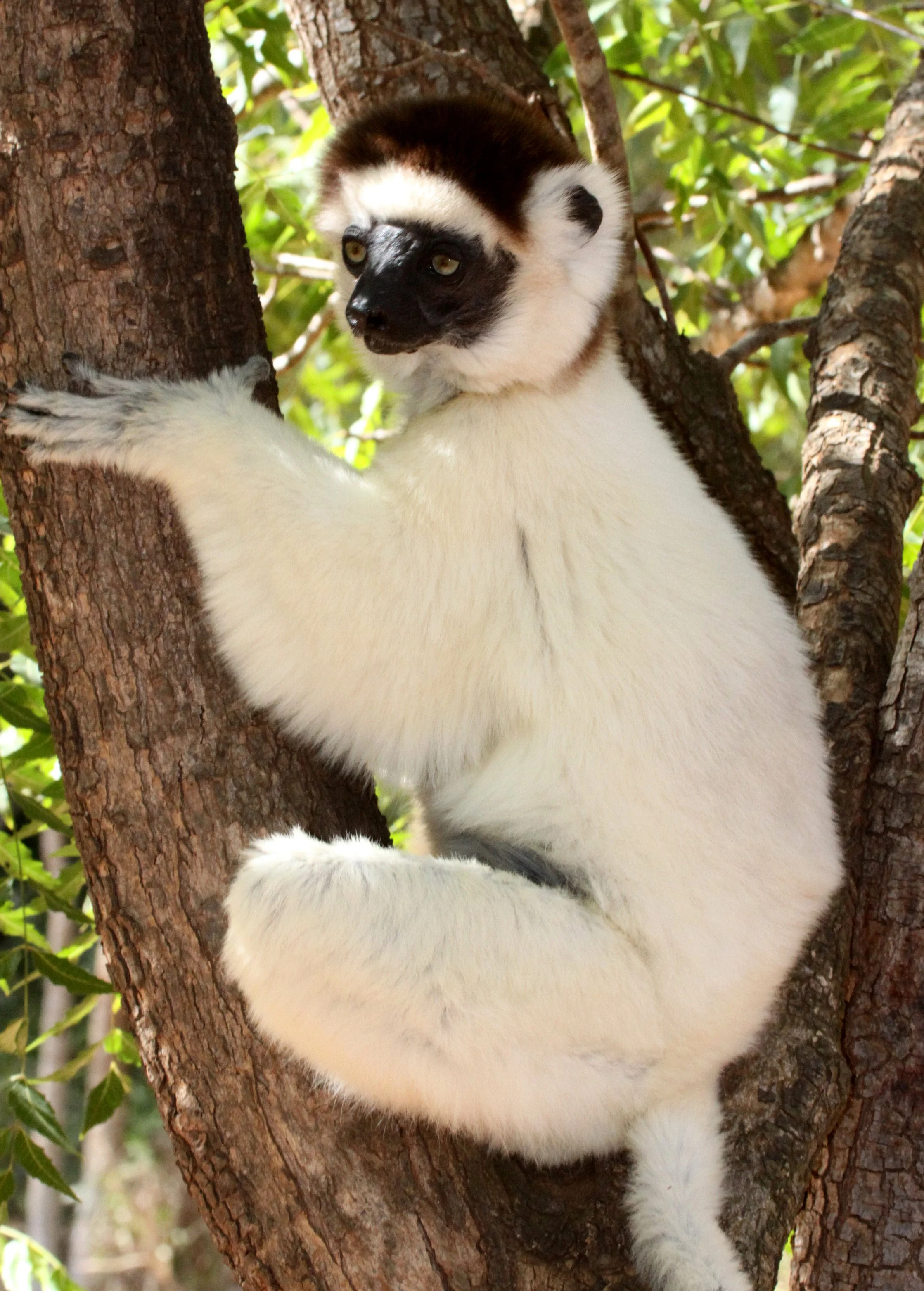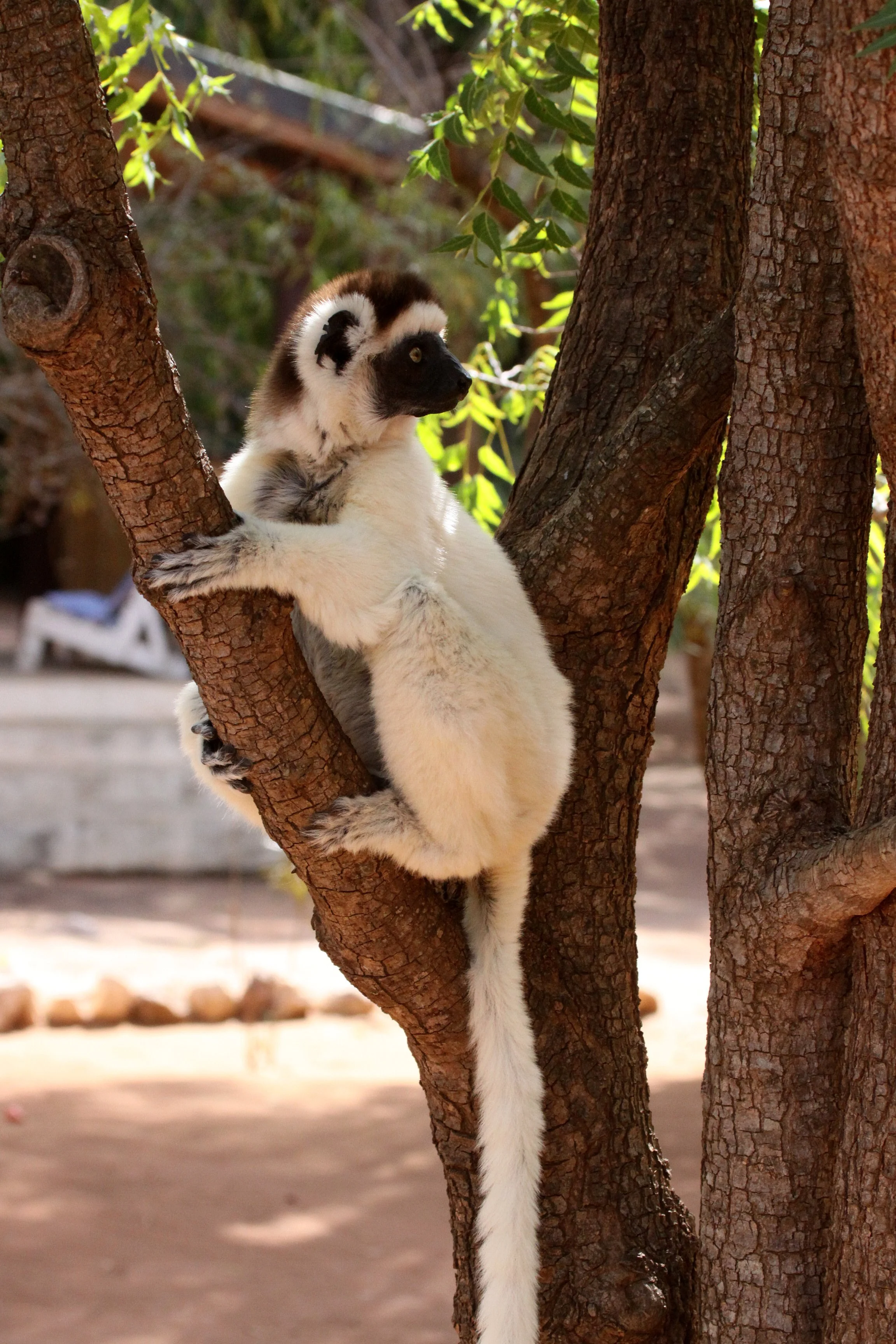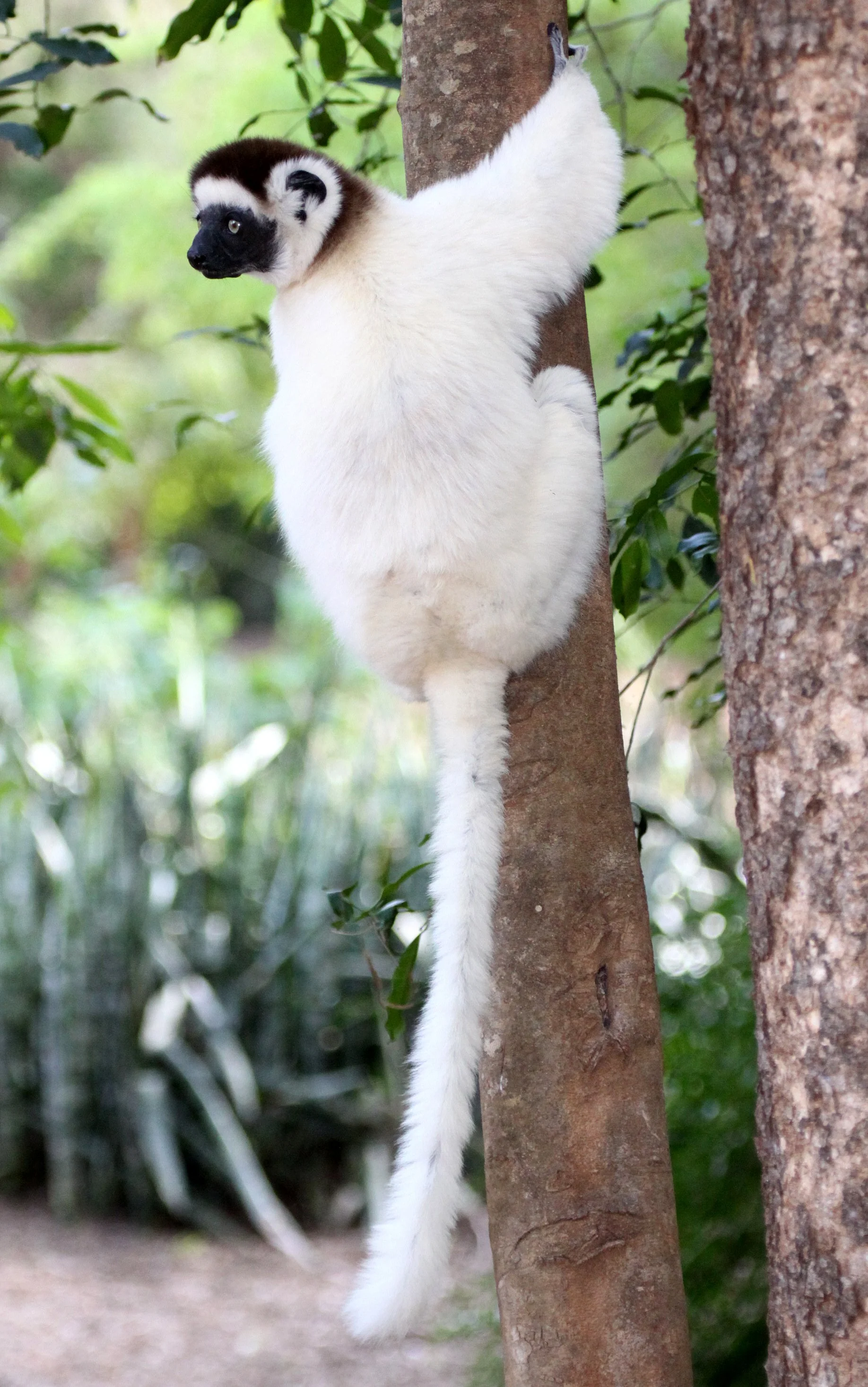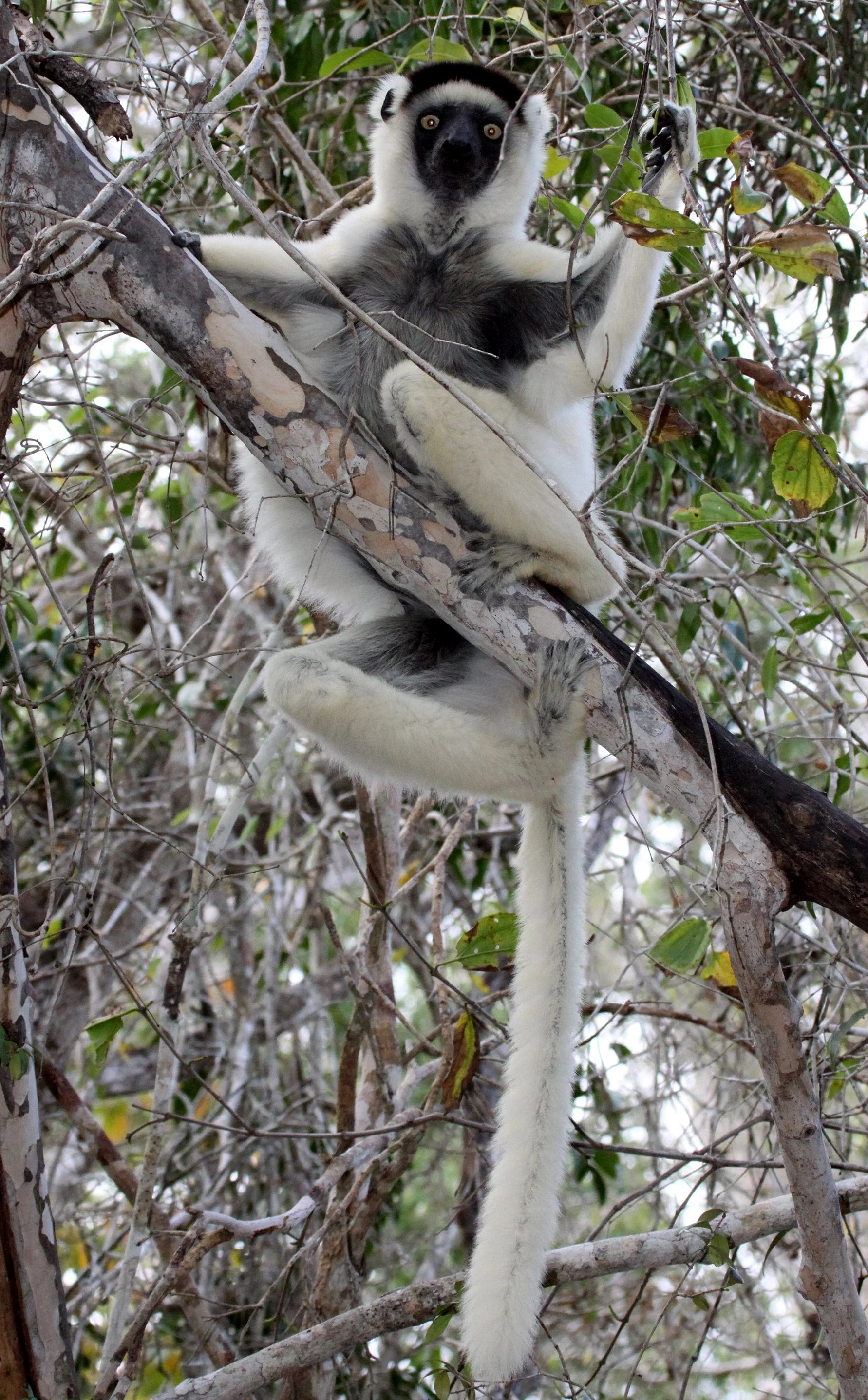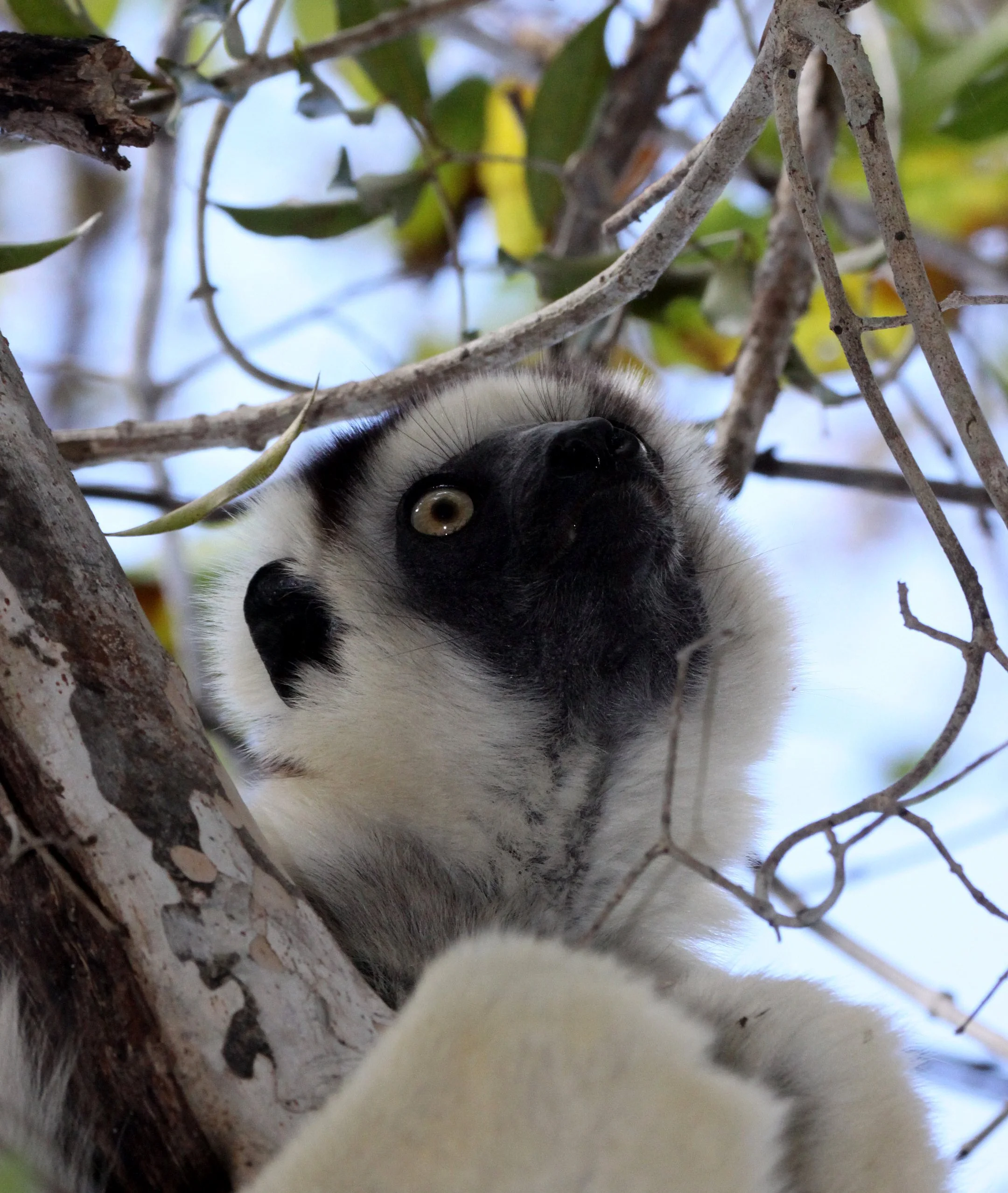Males and females were found to engage in a biological market, exchanging grooming for grooming during the non-mating period, and grooming ("offered" by males) for reproductive opportunities (sexual access "offered" by females) during the mating period. A study found that females copulate more with stained-chested than with clean-chested males. On the other hand, clean-chested males, with a lower scent-releasing potential, usually offer more grooming to females. This “grooming for sex” tactic allows males with a clean chest to get to copulate with females, even if at low rate.
It has also been discovered that sifaka dyads often engage in post-conflict reunions after aggressive episodes: reconciliation occurs more frequently when food is not involved and for low intensity aggressions. In this species play behavior persists into adulthood where it is used, especially by stranger males during the mating period, as an ice-breaking mechanism to reduce xenophobia.
A study of sifaka vocalizations found that roaring barks are associated with anti-raptor responses in which the Verreaux sifakas looked up and climbed down. On the other hand, the meaning of "tchi-fak" vocalizations and growls varied by population, where a population subject to significant terrestrial predation associated these vocalizations with anti-terrestrial responses in which the sifakas looked down and climbed up, while another population associated the "tchi-fak" with a non-specific flight response, and the growl with mild disturbance.
The species is listed in CITES Appendix I, and its IUCN conservation status was updated to Critically Endangered in 2020. In the small spiny forest fragments of South Madagascar, sifaka abundance appears to be influenced by the proportion of large trees (diameter at breast height >=5 cm) and by the abundance of the plant species Allouadia procera, a key species of the spiny forest habitat. A long-term, large-scale demographic study of the species at Beza Mahafaly Special Reserve in southwest Madagascar found that the sifaka population there had a population growth rate of 0.98 (with confidence intervals spanning 1), suggesting that the population was not in danger of imminent extinction. However, both severe droughts and an increased annual variation in rainfall levels can depress the population growth rate.











